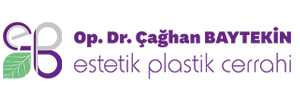ACNE SCAR TREATMENT BY LASER
HOW CAN LASER TREATMENT FOR ACNE SCARS BE EFFECTIVE?
Improvements in laser and light systems and acne screening treatments occur due to heat, peeling, sound waves and mechanical effects. When laser and light systems heat the skin at 50 ° C, the collagen fibers are shortened. This effect stretches the skin and reduces traces. Then the new collagen production is also stimulated by the heat effect. Increased collagen causes skin renewal and acne scars are reduced.
WHEN ARE THE RESULTS OF LASER TREATMENT OF ACNE VISIBLE?
When treatments are applied, temporary sudden healing due to edema and collagen shortening may occur. The actual healing is due to collagen formation and should be expected after 6-12 months.
WITH WHICH METHODS CAN LASER TREATMENT FOR ACNES BE USED?
Performing filler injections during or after laser therapy allows PRP, stem cell administration and achieve better results than post-treatment treatments.
WHAT IS LASER TREATMENT FOR ACNE?
The laser method used in the treatment of acne scars is divided into three;
1-Fractional lasers and fractional radiofrequency
2- Non-ablative laser and acne scar therapy
3- Ablative laser and acne scar therapy
HOW ARE FRACTIONAL LASERS AND FRACTIONAL RADIOFREQUENCY EFFECTIVE IN LASER TREATMENT OF ACNES?
Fractional lasers and radiofrequency systems are considered to be as effective as ablative lasers and as safe as non-ablative lasers. Fractional lasers can reach the lower layers of the skin giving intense energy at the points where the shots are made. For this reason it is particularly effective on deep scars. Since the shots are made in dots, the intervening intact areas make it easier to heal on the skin and reduce side effects.
HOW TO APPLY FRACTIONAL LASER AND RADIOFREQUENCY IN LASER TREATMENT OF ACNES?
2-5 sessions of fractional laser and radiofrequency are recommended. Redness and mild crusting may occur after 4-10 days. The rate of side effects after the process is low.
Rarely spotting, infections, acne can be seen.
WHAT ARE FRACTIONAL LASER TYPES?
Fractional Lasers are divided into 2 types;
Ablative fractional lasers: 10600 nm carbon dioxide laser, 2940 nm erbium laser, 2790 nm Er-YSGG laser
Non ablative fractional lasers: Fractional radiofrequency, 1550 nm, 1540 nm, 1440 nm lasers
HOW ARE THE NON-ABLATIVE LASERS EFFECTIVE IN LASER TREATMENT OF ACNES?
The laser and light systems used in this method create an effect under the skin without affecting the upper layer of the skin. The efficiency of laser and light systems that are effective on skin is slightly lower than that of fractional lasers. After the process, individual can immediately adapt to social and business life. Side effect rates are low. It may be a good choice for those considering due to business and social life.
HOW MANY SESSIONS OF NON-ABLATIVE LASERS RE REQUIRED?
Acne (acne) scar treatments should be performed for 6 sessions in 2-4 week intervals.
WHAT ARE NON-ABLATIVE LASERS?
1450-nm Diode Laser
1540 nm Erbium: Glass Laser
1320 mn Nd: YAG Laser
Pulsed-Dye Laser (585-595 nm)
Q-switched 1064 nm Nd: YAG Laser
Long Pulsed 1064 nm Nd: YAG Laser
LED
plasma
Radiofrequency.
HOW IS THE ACNE TREATMENT MADE BY USING ABLATIVE LASERS?
This type of laser is effective by peeling the top layer of skin. It is also thought that they are stimulating the production of collagen in the deep under the influence of heat, mechanical and sound waves. Thus, deep rejuvenation reduces acne scars. According to other peeling methods (dermabrasion, chemical peeling-peeling), it is possible to control the depth of laser peeling.
WHICH ARE THE ABLATIVE LASERS?
CO2 Laser
Erbium (YAG) Laser
WHICH MEASURES SHOULD BE TAKEN WHILE USING ABLATIVE LASERS IN ACNE TREATMENT?
Skin rejuvenation with laser cannot be used as a treatment during isotretinoin use and within 6 months after use. Laser treatment should not be used during the period when active acne is present. It can lead to the proliferation of acnes. Laser skin peeling is also at risk for dark-skinned people. The color of the peeled regions on the skin can become darker or lighter. Therefore, it should not be applied in summer, sunlight should be avoided.
WHAT ARE OBSERVED AFTER TREATMENT WITH ABLATIVE LASERS?
After laser skin resurfacing, the skin becomes red and swollen. During this period of recovery, your doctor will recommend ointments and bandages that make it easier to heal. Redness after laser skin resurfacing may last for several months. After laser treatment, you should avoid sunlight for a long time. In addition sun protection cream should be used daily with care. Laser side effects are deep scars, dark or light spot staining, infection, spreading of herpes virus infection

